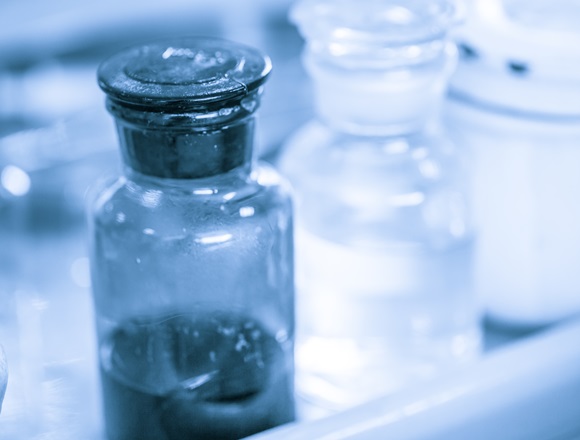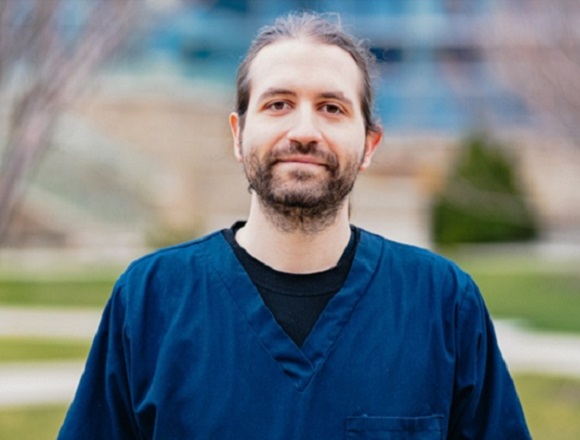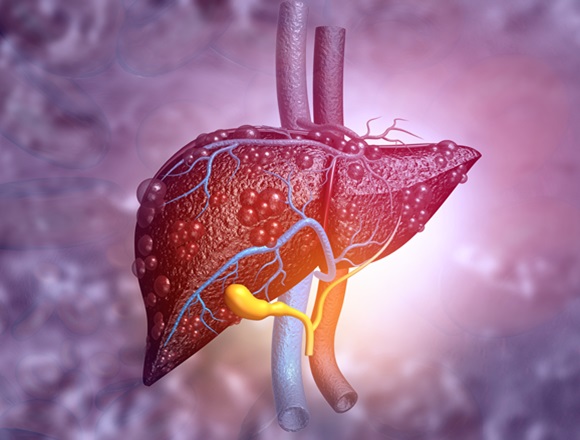Gerard Slobogean, MD, MPH, associate professor and director of clinical research for the Center for Orthopaedics, Injury, and Research Innovation at the University of Maryland School of Medicine, United States, and orthopedic surgeon specializing in complex fracture care and upper extremity reconstruction, joins Roman Jaeschke, MD, MSc, DPharm, critical care physician and methodologist, to discuss a recent paper on the use of iodine povacrylex in alcohol versus chlorhexidine in alcohol to prevent surgical site infection.
Staying current: Iodine vs chlorhexidine as a skin antiseptic
Contents
- Types of antiseptic solutions in use
- Study on iodine versus chlorhexidine as a skin antiseptic
- Definition of infection
- Closed-fracture versus open-fracture surgery: Efficacy of antiseptics
Transcript
Roman Jaeschke, MD, MSc, DPharm: Good afternoon. Welcome to another edition of McMaster Perspective. I have the pleasure of having Dr Gerard Slobogean to talk about the paper that he and his colleagues published in the New England Journal of Medicine (NEJM) about the use of different antiseptic solutions prior to orthopedic surgeries.
Professor Slobogean, maybe I will ask you to tell us a few words about yourself.
Gerard Slobogean, MD, MPH: Sure. My name is Gerard Slobogean. I’m an orthopedic trauma surgeon at the University of Maryland School of Medicine. I’m also the director of clinical research for the Center for Orthopaedics, Injury, and Research Innovation at Maryland. I also mentioned I actually have a part-time appointment at McMaster University as well.
Roman Jaeschke: Well, here you go. All roads lead to McMaster. That’s very good. Thank you.
When I saw this paper in the NEJM, I didn’t even think it’s a big deal. Once I started to think about it, it’s obviously used in millions of people every year around the world. But what confused me is I always ask for iodine solution and I get something. I didn’t realize that there’s that many of them. Could you please educate us a little bit about iodine antiseptic solutions? Why did you choose this particular one for your study?
Gerard Slobogean: Sure. I think fundamentally we use some sort of antiseptic solution prior to every surgery and often before every procedure. Those solutions come in 2 forms. First of all, they typically come in an iodine or chlorhexidine solution, but they also come in an alcohol or aqueous solution, so, theoretically, you essentially end up with 4 different combinations that are possible. Traditionally, the iodine solutions that have been available have been: povidone iodine (that has typically been in water, you know a trade name of Betadine—I think most of us think of Betadine—and that’s povidone iodine in water); then in about 2010 to 2011 there were a few landmark studies that compared povidone iodine in water to chlorhexidine gluconate (CHG) in alcohol and showed the superiority of the CHG solutions. Very quickly most practices switched to ChloraPrep or some version of this chlorhexidine in alcohol.
But you have to recognize that it may have been an unfair comparison—it may have been an alcohol solution to a water solution comparison. The Cochrane review and other authors have noted that an alcohol-based solution should really be used whenever possible but the difference between chlorhexidine in alcohol and iodine in alcohol... that question hadn’t been answered. That was the underlying premise of what we were trying to answer.
From a practical perspective, at least in the United States (US) and in most of North America, the 2 most common alcohol-based solutions that are available in the hospitals are 2% chlorhexidine in alcohol and then actually iodine povacrylex in alcohol, or a brand name of DuraPrep. That’s, as you mentioned, a different iodine. It’s iodine povacrylex, not povidone iodine. They have slightly different properties, essentially in terms of how they deliver the free iodine for the antisepsis.
Roman Jaeschke: All right, so the choice and the rationale are very clear. Could you tell us something about the study in the usual way: population, intervention, outcome, and results?
Gerard Slobogean: Yeah. As an orthopedic surgeon, I was mostly interested in the effect in orthopedic surgery, and specifically fracture surgery. We looked at enrolling all patients who were going to have fracture surgery of either the lower extremity and pelvis—those were our closed-fracture patients—or the upper extremity or lower extremity for open-fracture patients. As you know, when you break a bone, the bone is either sticking out of the skin or not, so we had an open-fracture population and a closed-fracture population. Those were both recruited and analyzed separately. We had almost 2 separate trials or 2 separate cohorts there.
The intervention was the iodine povacrylex in alcohol. The comparator was the standard 2% chlorhexidine in alcohol. Our primary outcome was surgical site infection defined by the Centers for Disease Control and Prevention (CDC), so basically 90-day infection, and our secondary outcome was reoperation within a year.
To implement that whole study, we actually used a pretty novel multiple-period, cluster, crossover design, so essentially each hospital was randomized, they did the randomized solution for 2 months for all patients who came in, then they switched over to the other solution. They kept switching back and forth and most hospitals recruited for about 2 years.
Roman Jaeschke: All right. You’ve done it. Is there anything you could tell us about the definition of infection, in some way that will talk to naive people?
Gerard Slobogean: Sure. Again, I mentioned the orthopedic surgery and the fracture surgery being the important part. All these surgeries involve putting in metal implants to fix these bones and that inherently is a little bit different than laparoscopic surgery or other types of surgical procedures. We looked at the CDC definition, which includes 3 months of a deep infection, so something that’s in the fascia or in the bone, and 30 days of a skin infection, so that both of those definitions encompass the CDC definition.
Roman Jaeschke: And it could be treated with antibiotics as well, right? It didn’t necessarily require surgical intervention, incision, drainage, and so forth. OK, what have you observed?
Gerard Slobogean: The main finding and probably what got it into the NEJM was the fact that we observed a significant reduction in infection with the iodine solution, so a 26% odds reduction for infection in closed fractures. This accounts for an absolute difference of 0.8%, so a small absolute difference, but, again, a relatively large magnitude. With a million fracture surgeries, a 0.8% reduction is actually quite a large reduction.
In the open fractures, we saw a similar point estimate of a 0.8% reduction, but the event rate was a lot higher. The sample size was a lot smaller, so the odds ratio was 0.86, but there’s quite a bit of uncertainty there, the P value was insignificant, so we don’t make any conclusions in the open fractures.
Roman Jaeschke: Any speculation why the closed-fracture population will have the effect and the open-fracture one not?
Gerard Slobogean: Yeah, I think the most important thing is to consider what you’re actually doing. In skin antisepsis you’re trying to decrease the bacterial flora on the skin prior to incision. Whereas in an open fracture, even when we get those [patients] to the operating room quickly, they tend to be 8 hours from their injury and typically 24 hours from their injury, and all that time the environmental contamination as well as the skin contamination have a chance to get into the wound. Perhaps the antisepsis step is just a small piece of it but not enough to overcome all the other factors of open fractures.
Roman Jaeschke: Correct me if I’m wrong but I see, at least in our institutions, more chlorhexidine than iodine-based solutions. Any downside of using the iodine solution? Cost? Inconvenience?
Gerard Slobogean: I would say certainly in most US operating rooms there’s zero downsides. The two of them are side by side. Almost every hospital that I’m aware of in the US and lots in Canada stock both of these products and often stock them side by side in the operating room. In those environments it’s just a matter of the surgeon’s choice or institutional preferences and you just grab whichever one you want.
The iodine solution has typically been a little bit cheaper, but these are US $6 interventions, so… Saving a dollar or 2 adds up over time, but you can consider them both essentially the same cost.
Roman Jaeschke: So the cost is small. Maybe a question, what do you use as a default?
Gerard Slobogean: We hope to implement the evidence-based practice and we think the evidence is very clear that for closed fractures you should absolutely be using iodine povacrylex in alcohol, so we switched.
Roman Jaeschke: That’s a big event. You mentioned the absolute difference of 0.8%. You mentioned that you are able to prevent 1/4 of infections effectively, which would mean that you need to apply it to slightly over 100 people to spare 1 infection.
Gerard Slobogean: Correct.
Roman Jaeschke: To me, there seems to be a difference between superficial skin infection and deep tissue infection, or, God forbid, the infection of the implant or metallic foreign body. Did you look at this comparison of what kind of infections you are preventing? Or all of them?
Gerard Slobogean: The study wasn’t designed to differentiate that and we led a pretty patient-engaged trial. Our patient partners indicated to us they don’t care what kind of infection we’re preventing. They just don’t want an infection. But just from a gestalt qualitative perspective, if you look at the data we reported, the trend seems to be moving in the same direction for both the superficials and deeps, so they each contributed to this effect.
Roman Jaeschke: Looking after a number of people who went with problems for a number of years and had multiple surgeries because of infections, I probably will forward your paper to our pharmacy and therapeutics committee and ask them to consider a switch.
OK, it’s very useful information. It’s one of those things that strike me, which is a relatively simple question, difficult to answer, and may change the practice across the world, so congratulations on your paper. I’m not surprised it made its way to the NEJM.
Gerard Slobogean: Thank you.
Roman Jaeschke: Thank you very much. Anything else you would like to share with our listeners?
Gerard Slobogean: Yeah. Most importantly, you started off by saying all roads lead to McMaster. This study, of course, was coordinated at the surgical methods center at McMaster University, led by Sheila Sprague, my co-principal investigator (PI), and Mohit Bhandari, another co-PI. There are >300 collaborators, 34 sites in our entire program, so a huge collaborative effort and I can’t thank them enough, and certainly a lot of credit to McMaster University.
The last thing I want to mention is if you are a surgeon of a different surgical discipline, I think you should really look at this data and decide whether this data applies to your practice as well. I think probably for a lot of practices it should, outside of fracture wards, but that’s a transportability question. We didn’t answer that question. I think the paper gives more insights as to why it may apply. This may not be an iodine versus chlorhexidine situation. The iodine povacrylex is a really sustained deliverer and it’s water insoluble, it protects the antisepsis, so it works longer on the skin. That may be why we saw this difference.
Roman Jaeschke: But skin is a skin is a skin, so theoretically, if one wishes, that would make an even bigger implication or another major randomized controlled trial (RCT).
Thank you for this stressing of collaborative work and thanking your collaborators. It’s fitting because we’ve just had Oscars yesterday [laugh]. Thank you very much, Professor Slobogean.
Gerard Slobogean: Wonderful. Thanks for your time, Roman.
Roman Jaeschke: Goodbye.
 English
English
 Español
Español
 українська
українська










